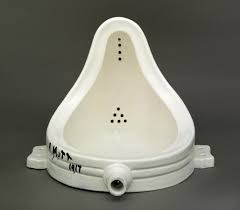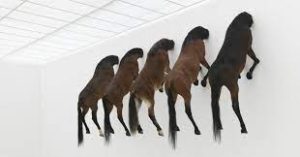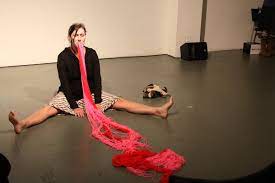What is conceptual art?
Conceptual art is art for which the idea (concept) behind the work is more important than the finished object. It emerged as a movement in the 1960s, and most commonly applies to pieces made from the mid-1960s to the mid-1970s. It was characterized by the use of text and unconventional materials, including “found objects.”

Marcel Duchamp’s “Fountain,” 1917

What is performance art?

Performance art originally meant art that had a performance element to it – i.e., a person (the artist) doing something odd or disturbing or surprising in front of an audience (See Worth Quoting.) It could include dance and dance-like movements, as well as speech and dramatic acting. But it stood apart from dance and acting because it actively involved the audience in the “experience.” The meaning of performance art, if there is meaning, is usually symbolic. And over time, it has broadened to include any form of artistic expression that has a social context.
I know. That sounds like bullshit. Because it is. Here are two definitions that you might prefer:
Here’s one from a docent at the Tate Gallery in London. Click here.
And here’s another one that’s more historical. Click here.
 MarkFord
MarkFord